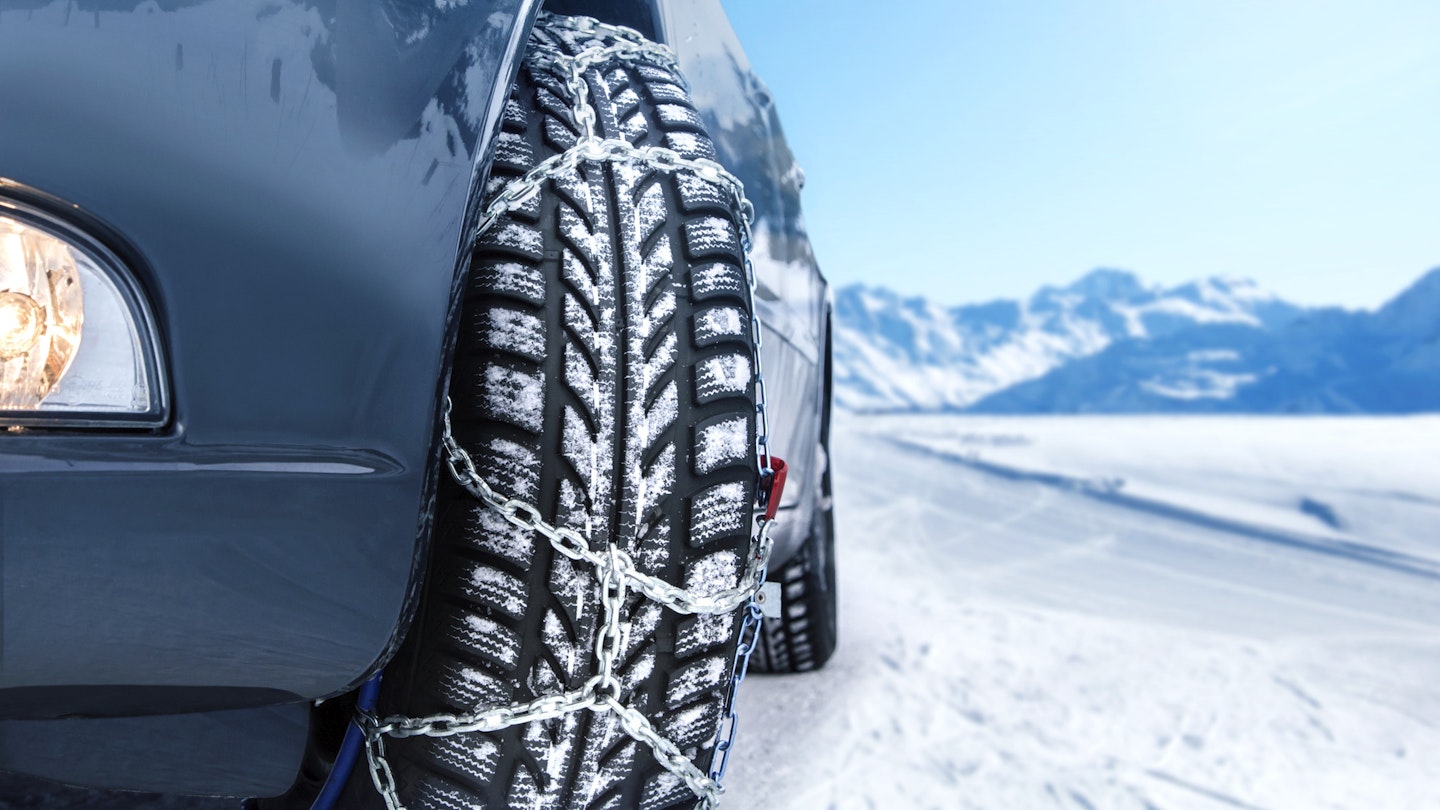In the frozen north of Europe and glamorous alps, snow chains are often a necessity. It's not just common sense, it's the law. The dates vary from country to country but from about November through to April, snow chains are advised to be carried when driving in most European countries and required in countries including Switzerland, Italy, Czechia, Hungary, and Norway.
Therefore, if you habitually travel to the continental ski slopes, you will need snow chains in addition to your roof box. But the UK? With its notoriously glum yet un-snowy weather? On an everyday winter basis, snow chains certainly won't be needed, but they're a good emergency piece of kit to have, especially since they're so effective in their element and a basic set is quite affordable.
Snow chains vs winter tyres

Snow chains: Can be inexpensive; perfect for snow and ice; only for use on snow and ice; easy to store.
Winter tyres: More expensive than snow chains; can be fitted for and used all winter; good on all road surfaces in cold temperatures; but you need the space to keep them when out of season.
Snow chains are an ideal emergency tool, in a similar way a portable jump starter is. But in the UK snow chains aren't needed or used often. Winter tyres, although more expensive, are a more usable option in the UK. You can get them fitted when the leaves turn russet and remove them when the first blossoms appear.
If you want to know more about winter tyres and which are best, read our guide on the best tested winter tyres.
What you need to know about snow chains
Snow chains provide extra grip to normal tyres by encompassing them in a web of chain links. It's a very effective system but means snow chains are specifically for ice and snow. Once a road ice free of ice or snow you need to remove the chains immediately to prevent damaging your car and the road surface.
Snow chains also inhibit the speed of travel. When fitted, don't push beyond 30mph. You also need to remember to avoid sudden braking or jerky steering inputs.
Double and triple check what size chains fit your vehicle. Your car’s manual will have this information, and so will the snow chains you’re considering. Performance cars with low profile tyres and low suspension often can't be fitted with snow chains because there isn't enough room inside the wheel arch, or the tyres are too wide.
To avoid frustration and looking like a twit, practice attaching and removing snow chains when you get them. In theory, they are all relatively simple to attach but in practice, particularly for those unfamiliar with snow chains, they can be a bit fiddly.
The tension on some snow chains hits in automatically when you drive along, while some require you tighten them manually – fit the chains, drive forward a few metres and check they've adjusted correctly.
Snow chains are fitted to the driving wheels of a car. For cars with four-wheel drive, fit chains to the front wheels.
Consult your car’s handbook to be sure, but many cars should be driven on chains with traction control systems turned off.
Wash snow chains after use to avoid deterioration.
The best snow chains
Editor's pick

If you want snow chains, get good ones that will do the job and last. This pair is good value for money and come from a reputable brand. Konig CB-12 snow chains have a manual tensioning system which means that after fitting them you'll need to drive forward several metres and check they are adjusted correctly. To be sure of the correct Konig snow chains for your car, see Konig's fit guide.
Best value

These Sumex snow chains are a thinner, lighter alternative to the Konig chains - 9mm as opposed to 12mm. That being said, they are a heavy-duty, quality pair of snow chains sizes available.
Best design
What sets this pair of Konig chains apart from the two above is its self-tensioning system and the design of the chain. These have an asymmetrical diamond pattern with an icebreaker design to give further grip.
Best for SUVs

Designed for SUVs, this pair of 12mm chains features Konig's patented self-tensioning system and a nylon anti-scratch protection for alloy wheels. These are easy to fit but don't forget to practice at home first.
Best snow socks
Snow socks are an alternative to chains, though they aren't as effective. But they are much easier to fit, nicer to drive on, and more compact to store. On top of this, they can be used on performance cars because snow socks aren't as chunky as snow chains. Just like chains, socks fit the driven wheels of a car and work by creating friction between wheels and surface and therefore more grip.


